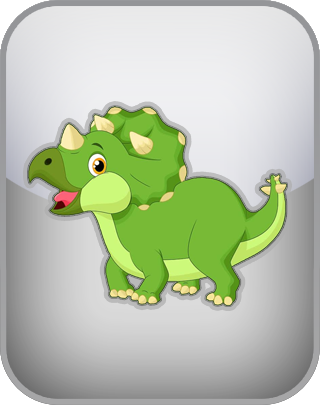Dinosaur Test
What dinosaur would you be?
Have you ever wondered which dinosaur best matches your personality? This fun and playful quiz will help you discover the ancient creature that reflects your unique traits. From the fierce power of the Tyrannosaurus Rex to the calm strength of the Apatosaurus, there's a dinosaur out there with qualities just like yours. Answer the questions, and see which prehistoric dinosaur or pterosaur resonates with your inner self.
To take the test, enter your input below.
Question 1 of 20
I enjoy learning new ways to solve problems or complete tasks.
| Disagree | Agree |
NEXT
The Dinosaur Test was created by IDRlabs.
Have you ever wondered which dinosaur might best represent your personality? Whether you’re strong and steady like a Triceratops or adaptable and agile like a Velociraptor, this test will connect your personal traits to the incredible creatures that roamed the Earth millions of years ago. Dinosaurs are not only fascinating because of their massive size or fierce reputation but also because each species had unique traits that helped them survive and thrive in their ancient environments.
Dinosaurs lived during the Mesozoic Era, which spanned over 180 million years and is divided into three periods: the Triassic, Jurassic, and Cretaceous. Throughout these periods, dinosaurs evolved dramatically in response to changes in climate, vegetation, and geography. For example, during the Jurassic Period, the world was lush with vegetation, allowing herbivores like Apatosaurus and Stegosaurus to grow to massive sizes as they grazed on ferns and other low-lying plants.
Carnivorous dinosaurs, like Allosaurus and later the famous Tyrannosaurus Rex, relied on their sharp teeth and claws to hunt down prey. But not all predators were about brute strength. Velociraptors, for example, were much smaller but compensated with agility, speed, and intelligence. Fossil evidence even suggests that some Velociraptors hunted in packs, much like wolves do today, using their coordination to take down larger animals.
One of the most fascinating things about dinosaurs is their incredible diversity. Ankylosaurus, for instance, was built like a living tank. Covered in thick bony armor, this Late Cretaceous dinosaur had a clubbed tail that could deliver devastating blows to any predator that dared approach. In contrast, Pteranodon, though not a dinosaur but a pterosaur, ruled the skies with its massive wingspan, diving into oceans to catch fish.
Some dinosaurs developed unique features to communicate with others or to help them survive. Take Parasaurolophus, a duck-billed herbivore known for the long, curved crest on the top of its head. This crest contained hollow tubes that may have allowed the dinosaur to produce sounds, helping them communicate with each other over long distances. This feature likely played a role in group dynamics, helping herd members stay connected across vast landscapes.
Then there’s the Triceratops, one of the most recognizable dinosaurs due to its large frill and three facial horns. While these horns were probably used for defense against predators like T. rex, scientists also believe they may have been used in combat between males, especially when competing for mates. Much like the horns of modern-day animals, Triceratops' horns were a versatile tool in both defense and social dominance.
Dinosaurs didn’t just have to worry about hunting and being hunted—they lived in a world where survival also depended on the environment. The Late Cretaceous, for example, saw dramatic changes in sea levels, volcanic activity, and even the layout of the continents. Dinosaurs had to adapt to these shifting environments. Dinosaurs like Quetzalcoatlus, the largest pterosaur ever discovered, may have soared over inland seas, using their long beaks to snatch up fish or small animals from the shore.
Stegosaurus, with its iconic plates running down its back, lived during the Jurassic period and may have used those plates for thermoregulation or as a display to intimidate predators or attract mates. Although it had a small brain relative to its body size, the thagomizer—the spikes at the end of its tail—made Stegosaurus a formidable opponent for predators like Allosaurus.
Did you know that the first dinosaur fossils weren’t recognized as belonging to dinosaurs at all? Early discoveries were often thought to be the remains of giant humans or mythical creatures. It wasn’t until the 19th century that scientists began to piece together the clues that these bones came from an entirely different group of ancient reptiles. Since then, paleontologists have discovered thousands of species, from the small, feathered Microraptor to the gigantic Argentinosaurus, believed to be one of the largest dinosaurs that ever lived, reaching lengths of up to 100 feet.
Another fascinating fact is that many dinosaurs may have been feathered! While not all dinosaurs were covered in feathers, evidence suggests that many, especially small theropods, had feathers, and even large species like T. rex might have had some in their juvenile stages. This discovery helps link dinosaurs more closely to their modern relatives—the birds.
Dinosaurs have captivated the imagination of scientists and enthusiasts alike for centuries. From the mighty Tyrannosaurus Rex to the mysterious Parasaurolophus, each dinosaur species had its own set of traits that helped it survive in an ever-changing world. As you explore this fun personality test, think about how you relate to these ancient creatures. Are you resilient like an Ankylosaurus, or adaptable like a Pteranodon? Perhaps you have the sociability of a Triceratops, thriving in group settings and fiercely protecting your friends and family. Whatever your dinosaur match is, it’s sure to offer a fun insight into how your personality might reflect these fascinating creatures!
This test cannot be used to provide clinical assessments or an accurate evaluation of your personality. Clinical assessments should always be done in cooperation with a mental health professional. For more information about any of our online tests and quizzes, please consult our Terms of Service.

